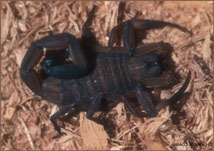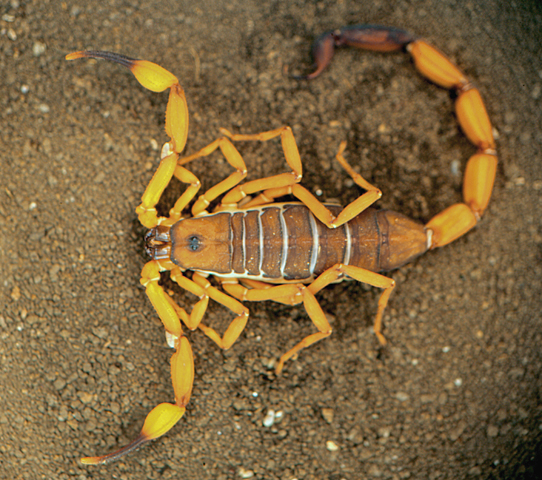|
Common names:
The specific name, limbatus , is from the Latin meaning "black-edged"
and refers to the coloration of the scorpion.
Distribution:
Costa Rica, Honduras and Panama.
Habitat:
This species is common in the forrest understory, where it can be found among the vegetation.
In nighttime, the scorpions hide under the bark of trees, and in cracks and crevices of trees, plants etc.
Members of this species have also been found in houses and other buildings. The scorpion has been found
from seal level to 1400 meters.
Venom:
No available data, but the species is not mentioned in medical literature. Sting
is probably very painful.
Selected litterature:
Scorpions of Costa Rica by Carlos Viquez.
Bush S.-P. 1999. Envenomation by the scorpion (Centruroides limbatus) outside its natural range and
recognition of medically important scorpions. Wilderness Environ. Med., vol. 3, p. 161-164.
On the Internet:
INBIO on Centruroides limbatus (In Spanish).
Information about C. limbatus by Scott Stockwell.
Picture on a german site.
General:
This species is a polymorphic species, that displays a range of colors. Most individuals have a
yellowish body color, except for the chelicera, the fingers of the pedipalps, the fifth segment of the tail
and the cephalothorax, which all are blackish. Other color variations of this species are dark (bluish-black),
while others are very pale (yellow-brown). Between these two extremes it is possible to find numerous variations.
This is a large species that can reach 110 mm in lenght.
This species resembles C. bicolor, but can separated from this species by
the color of the pincers (among other characteristica).
This species is probably not kept in captivity by
hobbyists.
The information on this page is
based on the website (link above) and the book Scorpions of Costa Rica with permission from the author Dr. Carlos Viquez.
Left: Centruroides bicolor (dark color form) photo by Graeme Lowe (C)
Right: Centruroides bicolor (light color form) photo by Dr. Carlos Viquez (C)
|

